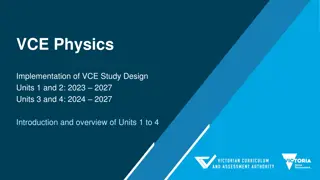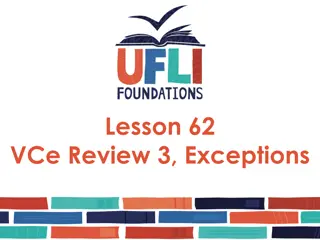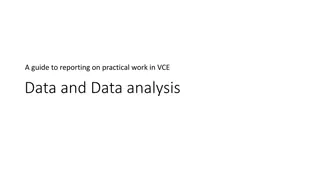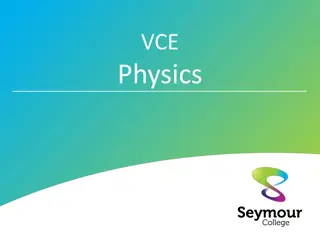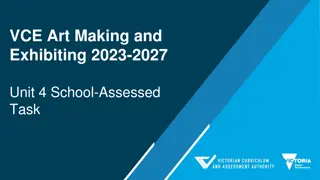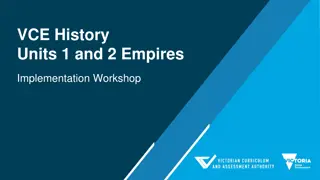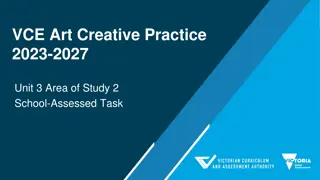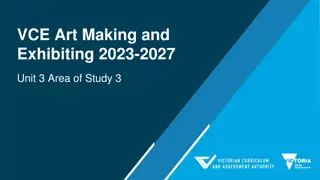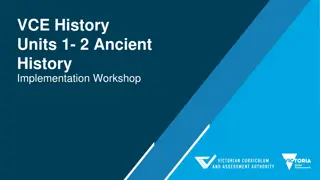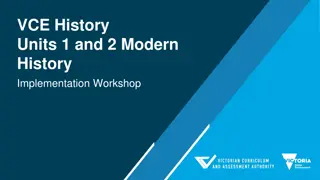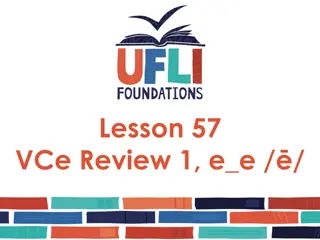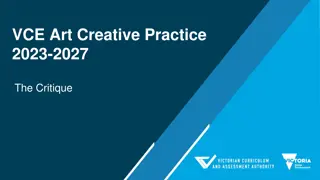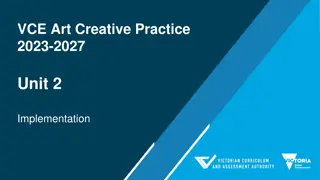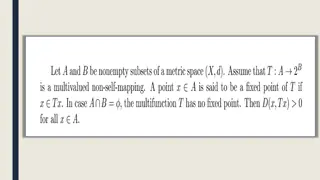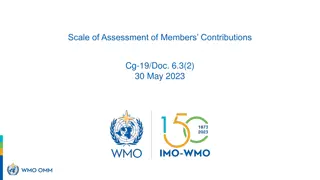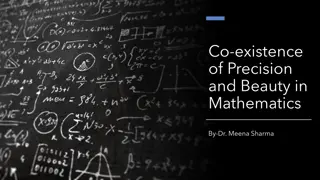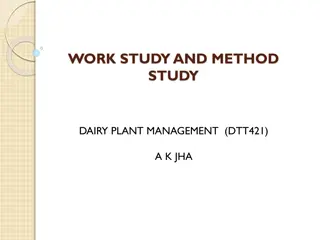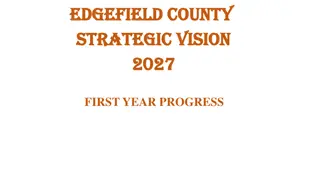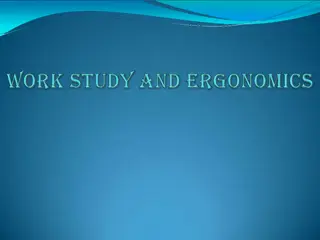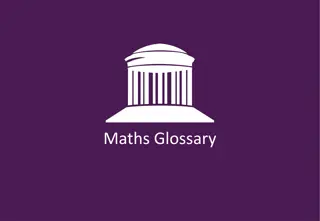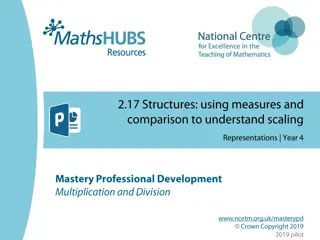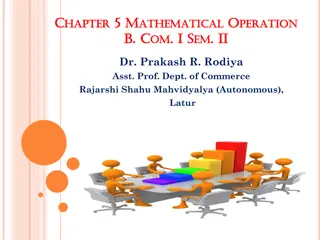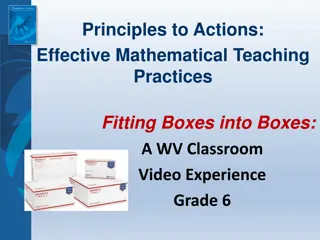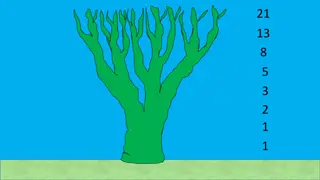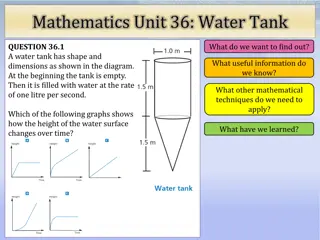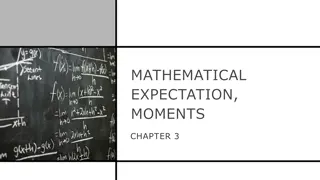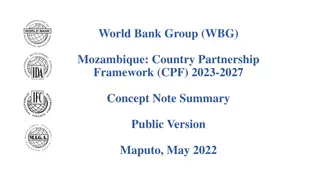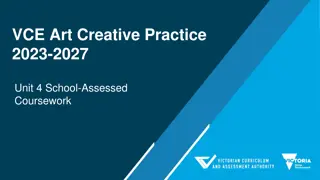Implementing the VCE Mathematical Methods 2023-2027 Study Design
The VCE Mathematical Methods study design for 2023-2027 includes a detailed outline of the curriculum, revisions in Units 1-4, investigations leading to assessments, and FAQs. The study design was the result of thorough consultation and review, published in February 2022 and accredited by VRQA. It features a range of support materials and resources to aid in the implementation process, ensuring students are guided effectively through the course content across various mathematical topics.
Download Presentation

Please find below an Image/Link to download the presentation.
The content on the website is provided AS IS for your information and personal use only. It may not be sold, licensed, or shared on other websites without obtaining consent from the author. Download presentation by click this link. If you encounter any issues during the download, it is possible that the publisher has removed the file from their server.
E N D
Presentation Transcript
VCE Mathematical Methods Implementing the 2023-2027 study design
General Outline 1. Brief background and new structure of VCE Mathematics 2023-2027 2. Outline of VCE Mathematical Methods Units 1 4 revisions 3. Discuss Investigations for Unit 1&2 leading to SACs in Unit 3&4 4. Address some FAQs (If time runs out, my contact details will be supplied)
The Study Design 2023-2027 Result of a thorough consultation and review process Published in February 2022 VRQA accredited from 2023 until 2027 VCAA undertake ongoing monitoring of study design implementation over the life of the study design VCAA support the implementation of the study design through an implementation program that includes webinars, on-demand videos, support materials and resources that provide guidance around study design awareness and clarification, sample course structures, suggested learning activities and sample investigations
VCE Mathematics studies 2023 - 2027 From 2023 there are four completely prescribed Units 1 4 VCE Mathematics studies: Foundation Mathematics Mathematical Methods General Mathematics Specialist Mathematics In each sequence, Units 1 and 2 contain assumed knowledge and skills for Units 3 and 4. Mathematical Methods Units 1 and 2 also contain assumed knowledge and skills for Specialist Mathematics Units 3 and 4. Specialist Mathematics Units 3 and 4 assumes concurrent study, or previous completion, of Mathematical Methods Units 3 and 4.
Mathematical Methods Units 1 & 2 The 2023 2027 Mathematical Methods study design prescribes the content for each of Unit 1 and Unit 2. The content for Unit 3&4 is combined. Unit 1 and 2 Areas of Study Functions, relations and graphs Algebra, number and structure Calculus Data analysis, probability and statistics
Mathematical Methods Unit 1 REVISED Areas of Study: U1_AOS1: Topic: Functions relations and graphs (dot-point 2) Points of inflection (including non-stationary) U1_AOS2: Topic: Algebra, number and structure (dot-point 5) Matrix representation no longer necessary for transformations U1_AOS4: Topic: Data analysis, probability and statistics Random variables and the distribution of results of experiments
Mathematical Methods Unit 1 Revised Key Knowledge and Key skills: U1_OC1 Key knowledge Explicit mention of vertical and horizontal asymptotes as key features of graphs Clarification of properties for probability U1_OC2 Key knowledge Key elements of algorithm design: sequencing, decision making, repetition including pseudocode U1_OC2 Key skills identify important information, variables, constraints and other key features to the investigation of various questions in a given context U1_O3 Key knowledge The role of computational thinking in problem solving and mathematical investigations The purpose and effect of sequencing, decision-making and repetition statements
Mathematical Methods Units 1 Assumed Student facility: U1_AOS1: Topic: Functions, relations and graphs Review of coordinate geometry Use of vertical line test to determine a function (as a sub-set of relations) U1_AOS2: Algebra, number and structure Inverse functions no longer appear in the AoS description, however, they remain in the key skills as a form of transformation
Mathematical Methods Unit 1 Removed/deleted: U1_AOS1: Topic: Functions, relations and graphs Graphs of polynomials of degree greater than 4, however, still implicitly present U1_AOS2: Algebra Expansion of , however, still implicitly present (power forms defined in AoS1) U1_O1 Key skills Equations and by hand sketching of graphs of circles in the Cartesian plane (beyond operational knowledge of the unit circle in Unit 2) ( ) n + x a
Mathematical Methods Unit 2 REVISED Areas of Study: U2_AOS: Topic: Algebra, number and structure Clarification of the use of Newton s method as an algorithm U2_AOS3: Topic: Calculus Informal treatment of the gradient to a curve at a point as a limit ? ? = lim 0 = lim 0 The central difference approximation ? (?) ? ?+ ?(? ) ? ? ? ? ? ?+ ? ? (THIS IS FIRST PRINCIPLES DIFFERENTIATION) and its graphical interpretation 2 U2_AOS4: Topic: Data analysis, probability and statistics Simulation to estimate probabilities involving selection with and without replacement
Mathematical Methods Unit 2 REVISED Key Knowledge and Key skills: U2_OC1 Key knowledge Emphasis on the unit circle and explicit mention of asymptotes as key features of graphs The central difference approximation U2_O2 Key knowledge Key elements of algorithm design: sequencing, decision making, repetition, including use of pseudocode. U2_O3 Key knowledge The role of computational thinking in problem solving and mathematical investigations The purpose and effect of sequencing, decision-making and repetition statements
Mathematical Methods Unit 2 Assumed Student facility: U2_AOS1: Topic: Functions, relations and graphs Review of basic trigonometric ratios (SOHCAHTOA and applications) Measures of turn or rotation, degree to radian conversion Removed/deleted: U2_AOS3: Topic: Calculus Graphical and numerical approaches to approximating the gradient function Notations of derivative and first principles approach to derivatives Solving simple problems involving straight line motion Karnaugh maps?? (Still a required technique)
Mathematical Methods Units 3 & 4 Areas of Study: Functions, relations and graphs Algebra, number and structure Calculus Data analysis, probability and statistics
Mathematical Methods Units 3 & 4 REVISED Areas of Study: AOS1: Topic: Functions and graphs Closer highlighting of key features of the graphs of the prescribed functions AOS2: Topic: Algebra, number and structure Numerical solutions of polynomial equations (Newton s method) Broader options of composite function nomenclature: (fog)(x)=f(g(x)) AOS3: Topic: Calculus Key features of graphs now includes points of inflection Area approximations using the trapezium rule AOS4: Topic: Data Analysis, Probability and Statistics Expanding the use of simulations to illustrate variations in CI dependant upon the point sample
Mathematical Methods Units 3 & 4 ASSUMED background knowledge and skills: AOS2: Topic: Algebra Review of algebra of polynomials and equating coefficients AOS3: Topic: Calculus Review of average and instantaneous rates of change, tangents and derived function
Mathematical Methods Unit 3&4 Revised Key Knowledge and Skills: U3/4_OC1 Key knowledge Introduction of the trapezium rule, explicit mention of vertical and horizontal (not oblique) asymptotes, Newton s method algorithm U3/4_OC2 Key knowledge Specific and general formulations of concepts used to derive results Key elements of algorithm design: sequencing, decision making, repetition including pseudocode U3/4_OC2 Key skills Identify important information, variables, constraints and other key features of investigations Use algorithms, patterns, models and simulation to solve problems in a given context U3/4_OC3 Key knowledge/key skills The role of computational thinking in problem solving and mathematical investigations The purpose and effect of sequencing, decision-making and repetition statements
Mathematical Methods Units 3 & 4 No longer present: AOS1: Topic: Algebra Simple functional relations (Matrices for) transformations of functions AOS3: Topic: Calculus Identification of intervals over which a function is constant Identification of the maximum rate of increase or decrease Specified contexts for definite integrals (i.e. basic kinematics, cumulative growth AOS4: Topic: Data analysis, probability and statistics Median of a continuous random variable
Mathematical Methods Units 3 4 In Units 3&4, the assessment weighting used to calculate the final study score has been slightly re-adjusted (p. 12 in 2023-2027 study design)
Mathematical Investigation Units 1 & 2 For each unit: This comprises one to two weeks of investigation into one or two practical or theoretical contexts or scenarios based on content from areas of study and application of key knowledge and key skills for the outcomes. Investigation is to be incorporated in the development of concepts, skills and processes for the unit, and can be used to assess the outcomes.
Mathematical Investigation Units 1 & 2 There are three components to mathematical investigation: Formulation: overview of the context or scenario, and related background, including historical or contemporary background as applicable, and the mathematisation of questions, conjectures, hypotheses, issues or problems of interest. Exploration: investigation and analysis of the context or scenario with respect to the questions of interest, conjectures or hypotheses, using mathematical concepts, skills and processes, including the use of technology and application of computational thinking. Communication: summary, presentation and interpretation of the findings from the mathematical investigation and related applications.
Mathematical Investigation Units 1 & 2 Can be implemented in a variety of ways to meet requirements: as an investigative learning activity or activities as an assessment task or tasks a combination of the above Time range 1 to 2 weeks: Minimum one longer activity/task, or two shorter activities/tasks over the equivalent of 1 week duration Up to 2 weeks, a suitable combination, for example, two longer activities/tasks, one longer and two shorter activities tasks, three medium activities/tasks, four shorter activities/tasks
Mathematical Investigation Units 1 & 2 Provides a natural and effective context for addressing Outcome 2 and Outcome 3 Can be used to support computational thinking and experimentation Is one of the assessment task types listed for Units 1 and 2 Provides preparation for the application, problem solving and modelling tasks in Specialist Mathematics Units 3 and 4.
Sample Investigation topic Introduction This task involves students modelling an approximate tidal pattern for a chosen coastal town and to explore the effect rising sea levels might have on their chosen location, with consideration of the increased reach of high tide. Students are encouraged to use online elevation maps and predictive maps to help them assess the potential impact of rising sea levels; several relevant links are provided below. Australian tide information: https://tides.willyweather.com.au/ Elevation Finder Map: https://www.freemaptools.com/elevation-finder.htm Interactive maps indicating potential impact of rising sea levels:
SACs in Units 3 & 4 Application Task Outcomes Outcome 1 Define and explain key concepts as specified in the content from the areas of study and apply a range of related mathematical routines and procedures. Marks allocated Assessment task Application task A function and calculus-based mathematical investigation of a practical or theoretical context involving content from two or more areas of study, with the following three components of increasing complexity: introduction of the context through specific cases or examples consideration of general features of the context variation or further specification of assumption or conditions involved in the context to focus on a particular feature or aspect related to the context 15 Outcome 2 Apply mathematical processes in non-routine contexts, including situations with some open-ended aspects requiring investigative, modelling or problem-solving techniques or approaches, and analyse and discuss these applications of mathematics. Outcome 3 Apply computational thinking and use numerical, graphical, symbolic and statistical functionalities of technology to develop mathematical ideas, produce results and carry out analysis in situations requiring investigative, modelling or problem-solving techniques or approaches. 20 15
Pseudocode Introduction Pseudocode is a tool for representing algorithms without the use of a particular programming language and related syntax. It is written in a combination of plain English and common symbols, and describes, in a detailed step-by-step manner, the processes used in the algorithm. An example for finding the smaller of two numbers a and b Algorithm: minimum of two numbers inputa, b if a bthen printa else printb end if
Computational Thinking Decomposition Break down the problem into simpler, less complex components Pattern Recognition Classify patterns in data and organizing data logically Representation and interpretation Abstraction Removing non essential information and focusing on principal structure only Algorithms A sequence of instructions that can be performed Link is HERE.
Some FAQs Will Support material be available and when? Will sample SACs be published by VCAA? Will pseudocode be examinable? Has the SAC structure (effectively) changed? What does algorithmic thinking look like? What is the role of computational thinking?
Contact Michael MacNeill Curriculum Manager, Mathematics Victorian Curriculum and Assessment Authority Level 7, 2 Lonsdale Street, Melbourne 3000, Victoria T +61 3 7022 5538 M 0438 602 765 Email: Michael.MacNeill@education.vic.gov.au



